iPhone XR Review: Still Worth Buying In 2022? Let’s Investigate…
The iPhone XR is Apple’s Best-Selling iPhone. And With Good Reason Too. But Is All As It Seems? Or Are You Better Off With A Newer Model?
The iPhone XR is one of Apple’s most popular iPhone releases of all time. Between the years 2018 and 2019 it was the best selling iPhone by a country mile, beating both the iPhone X and the iPhone XS series.
It was the first iPhone that was positioned as a value proposition, meaning it cost a lot less than Apple’s other models (the iPhone XS and iPhone XS Max). And people loved this.
But the big question today is this: should you buy an iPhone XR in 2022?
In order to answer this question properly, I’m going to cover off everything you need to know about the iPhone XR, including its specs and hardware (and how they stack up in 2022), how much it costs in 2022, and the PROS and CONS of buying one in 2022.
Where appropriate, I’ll also make suggestions about different potential options you should maybe be looking at – newer models like the iPhone 11 Pro Max, iPhone 12, and even the iPhone 13 – because the iPhone XR, while still perfectly viable in 2022, does come with quite a few caveats that you need to be aware of…
Mục lục bài viết
When Did The iPhone XR Come Out?

When the iPhone XR got its release date, way back in 2018, in simpler times, it was something of a game-changer. Both for Apple and many of its long-standing fans. The XR also earned Apple a fair few new users, thanks to its way-lower-than-usual price tag – $499.99 at launch.
Since then Apple has released a slew of newer models, culminating in 2022’s iPhone 14 range. To say a lot has changed since the release of the iPhone XR would be the understatement of the century.
All iPhones – even the base models – now ship with 5G, OLED displays in the form of Apple’s Super Retina XDR Display, massively improved camera modules with the inclusion of telephoto and LiDAR sensors on the Pro and Pro Max models.
iPhone XR Specifications
- Weight: 194g
- Dimensions: 150.9 x 75.7 x 8.3mm
- Display size: 6.1-inch
- Resolution: 1792 x 828
- Chipset: A12 Bionic
- RAM: 3GB
- Storage: 64/128/256GB
- Rear camera: 12MP
- Front camera: 7MP
- Pre-installed software: iOS 12
- Battery: 2,942mAh
- Charging: 15W
And yet, the iPhone XR – even from the vantage point of 2022 – is still kind of appealing. Part of the reason is its price: the iPhone XR costs literally next to nothing in 2022, so if you’re after a way of cutting your monthly phone bills, this phone could well be it.
But you definitely need to keep certain caveats in mind, should you choose to buy the iPhone XR in 2022. For starters, it doesn’t have 5G. It also lacks a dual-lens camera module. And it runs Apple’s older LCD screen technology.
But it does still look as modern as ever, so that’s something. And it is available in a range of colors. The battery life on the XR is also incredible, even by 2022 standards.
In addition to this, the iPhone XR will get iOS updates for years to come but the internal hardware, while perfectly adequate for basic stuff, is now starting to show its age, especially if you plan on doing anything too complex with it – video and image editing for instance.
iPhone XR Camera
- iPhone XR Main Camera: 12 MP, f/1.8, 26mm (wide), 1/2.55″, 1.4µm, PDAF, OIS
The iPhone XR runs the same 12MP sensor as the iPhone XS. For basic stuff, uploading pictures to social media and snapping photos of your friends and family, it is perfectly adequate with excellent color balance and natural-looking color production.
It does lack plenty of the features you’ll find on modern phones; there’s no ultrawide lens, no telephoto lens, and its zooming capabilities are somewhat limited. Again, if you’re a basic user – meaning you don’t take that many pictures and/or videos – it’ll be perfectly fine.

It still has things like Portrait Mode which will blur out the background but it does lack plenty of the features you’ll find on the iPhone 11 and iPhone 12.
Low-light performance isn’t great either, thanks to its smaller aperture (again, compared to newer models) but this is pretty much par for the course with a phone released four years ago – camera tech comes along in leaps and bounds between generations.
Alongside its lack of 5G, the iPhone XR’s camera is one of the areas where the phone shows its age most. Again, though, this is all relative. If you’re currently using a really old iPhone, like the iPhone 6s or iPhone 7, it will feel like a massive leap forwards.
For a phone that now costs less than $250, the camera is more than adequate on the iPhone XR.
If you’re dead set on having a cheaper iPhone but do not want to scrimp on photography performance, go with either the iPhone 11 or iPhone 11 Pro Max – both are significantly better.
iPhone XR CPU
- Chipset: Apple A12 Bionic (7 nm)
- CPU: Hexa-core (2×2.5 GHz Vortex + 4×1.6 GHz Tempest)
- GPU: Apple GPU (4-core graphics)
The iPhone XR runs Apple’s A12 Bionic CPU. By 2022 standards, and more specifically Apple’s current standards, it is now pretty old. But this doesn’t mean it isn’t fit for purpose in 2022.
Apple’s CPUs are insanely powerful. Most users never even tap 20% of its latent performance abilities, so while the A12 is now four generations old, it still packs a punch in the all the areas that count.
Comparatively, the iPhone XR’s CPU is only a smidge slower than the iPhone 11’s – it scored 2100 in Geekbench multi-core, while the iPhone 11 got 3077.
Geekbench (v5)Single-coreMulti-coreiPhone 8 Plus9171985iPhone XR11052100iPhone 1113243077
Benchmark tests are great for showing how one chip is better than another, but they don’t translate into real-world usage that well. In practice, the XR has more than enough power under the hood to run just fine in 2022.
Indeed, prior to updating this review, I broke out my old iPhone XR and used it for a few days. I currently run an iPhone 13 and while the 13 is obviously faster and has a better camera, general stuff like running apps and browsing the web were comparable.
For those looking for what is arguably the cheapest and best value iPhone right now, do not be put off by the iPhone XR’s four year old CPU. Apple’s CPUs are insanely powerful and they remain that way for years at a time.
If all you do is use apps, run email, browse the web, and make calls and IM, the iPhone XR has more than enough performance to handle these things with ease. Even with gaming, the phone still handled everything I threw at it.
And that should tell you everything you need to know about the iPhone XR’s performance chops in 2022.
Is The iPhone XR Still Worth Buying In 2022? PROS & CONS
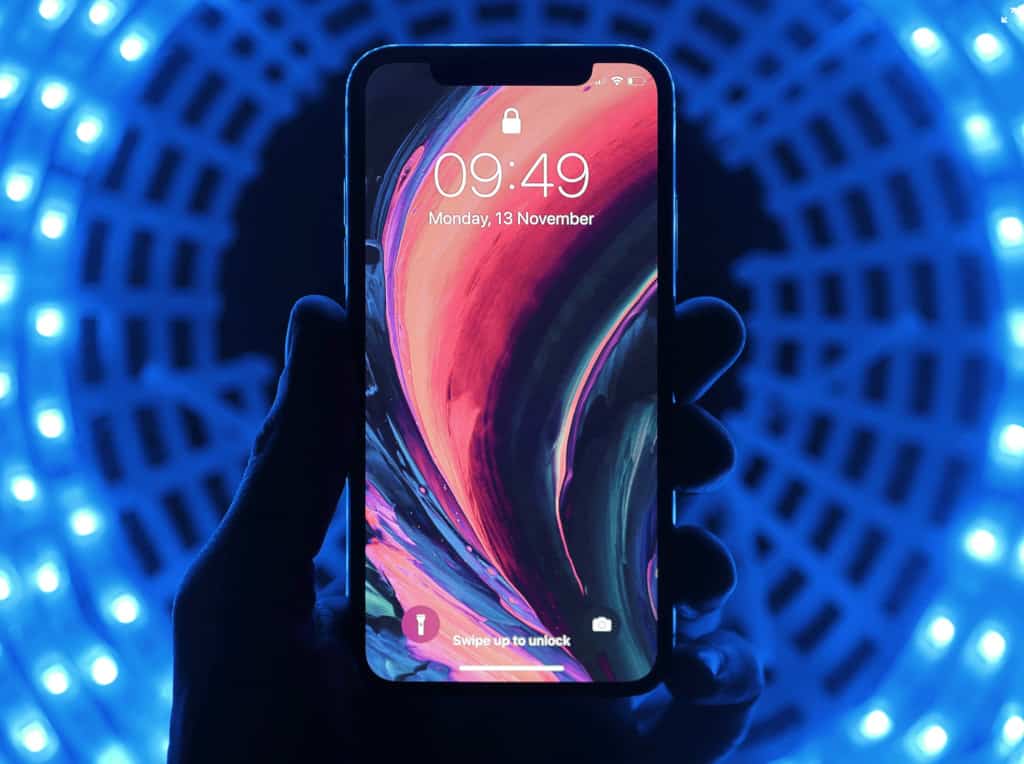
But 2018 was four years ago now which begs the question: is the iPhone XR still worth buying in 2022?
As always, it depends – it depends on what you want from a phone and what you don’t want. If you want a cheap, yet still very powerful phone, then, yes, the iPhone XR is totally worth buying in 2022.
But it is only worth buying as long as you can handle and are aware of its caveats – it doesn’t run 5G, its CPU is getting old but it still perfectly good, and it doesn’t have an OLED display.
The iPhone XR runs Apple’s A12 Bionic SoC and this chip is still very potent, even by 2022 standards. The iPhone XR looks like the iPhone 11 and iPhone 12, thanks to its all-display frontage and the fact it runs FACE ID, not Touch ID like the iPhone SE 2020.
You also have a range of color options with the iPhone XR too; in fact, this is one of the reasons, besides price, why it was so popular for so long – Apple users love having lots of color options, seemingly.
iPhone XR PROS – Why You’d Buy It…
The PROS of buying an iPhone XR in 2022 vastly outweighs the cons, in my opinion. The phone itself is now quite a bit cheaper than it was in 2018 – you can grab one for next to nothing.
- The design of the iPhone XR is still extremely modern; it doesn’t look dated and it has all the same physical attributes as Apple’s newer iPhones, including stuff like FACE ID.
- The display, while LCD, is perfectly adequate. It’s not as good as Apple’s OLED panels found on all models post iPhone 12 but it’ll get the job done and is the same panel that Apple used on the iPhone 11.
- The battery on the iPhone XR is superb as well; it runs a 2,942 mAh battery which is larger than both the iPhone X and iPhone XS’ batteries. This means you’re looking at some of the best battery performance ever seen inside an iPhone – and that includes Apple’s newer iPhone 11 and iPhone 12 models.
- The iPhone XR also supports wireless charging and Apple’s 18W wired fast charge. Not that you’ll need it much; again, the battery life of the iPhone XR is incredible. It was one of the things that most impressed me about the phone when I used one. It just wouldn’t die, no matter what I threw at it.
On top of this, you have full IP67 water and dust resistance, a decent(ish) 12MP rear camera, and one of the nicest chassis designs in the business. Add in the fact that the iPhone XR now costs less than $300 and you’re looking at one of the best value iPhones on the planet.
Oh, and the iPhone XR will be getting iOS updates well into the late 2020s, so you don’t need to worry about software support either. Like all iPhones, you’ll be able to use this phone for 6-8 years without issue.
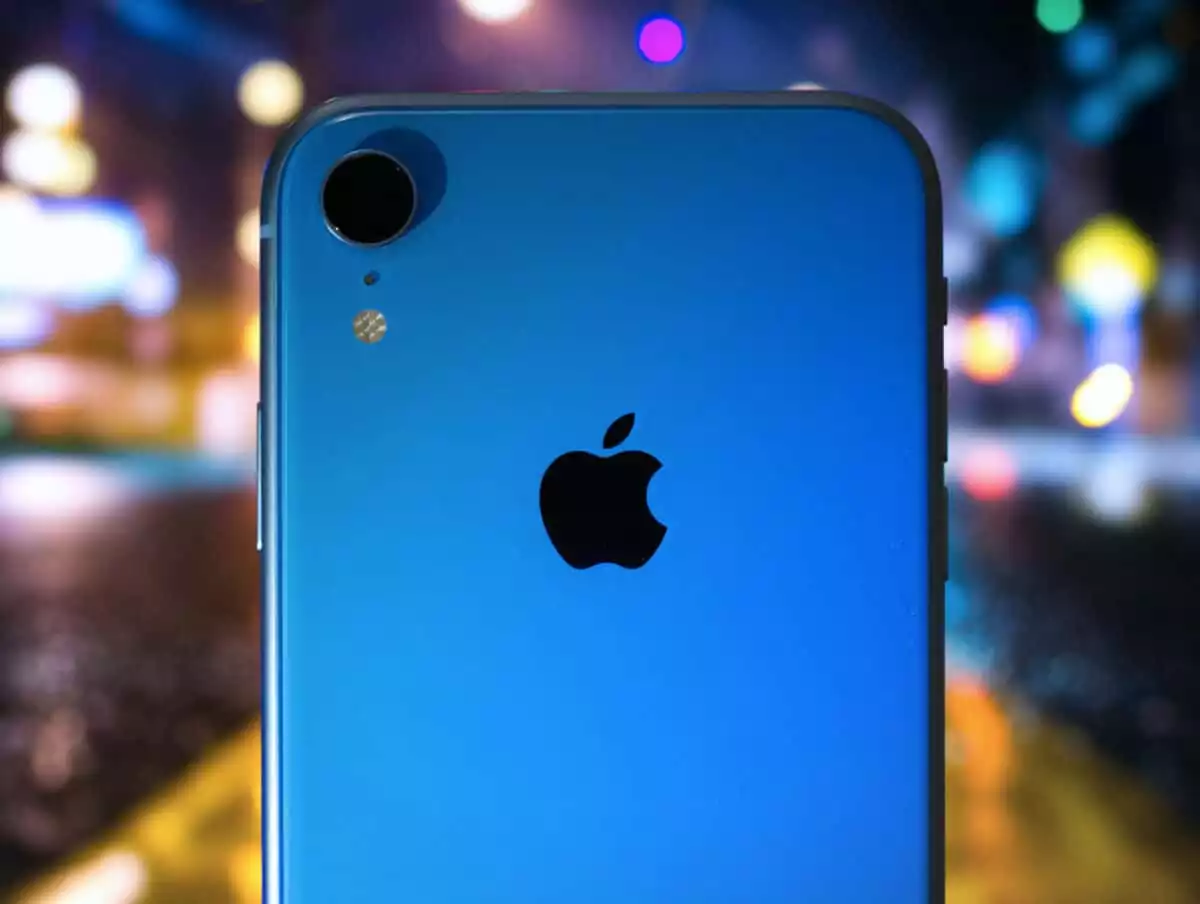
iPhone XR
4.5
The iPhone XR is now one of the cheapest routes into Apple’s ecosystem. It doesn’t have 5G and it runs Apple’s older LCD screen. But the phone itself looks as modern as ever and now costs next to nothing. If you’re looking for a cheap way to buy an iPhone, this is it…
Pros:
-
Outstanding Battery Life
-
Modern Design w/ FACE ID
-
Will Get iOS Updates For Years
-
Loads of Color Options
-
Still A Solid Performer
BEST DEAL RIGHT NOW
iPhone XR CONS – Why You’d Avoid It…
For me, the cons for buying an iPhone XR are pretty minimal, especially if you just want a functional phone with great software and excellent battery life.
The main issue, for many, will be that the iPhone XR’s camera isn’t that impressive; it’s a single-lens 12MP shooter – the same as the iPhone XS’. Missing 5G connectivity is also a growing concern, as 5G becomes more readily available across the nation.
Is it terrible? No, but it pales in comparison to the camera on the iPhone 11 and iPhone 12.
If camera performance, meaning market-leading camera abilities, is important to you, you’ll have to pony up the big bucks for one of Apple’s more recent models, the iPhone 11 Pro Max is now well a look – it’s way cheaper than you’d think.
And now that the iPhone 14 is out, the iPhone 12 and iPhone 13 are now a lot cheaper – even the Pro models.
If you’re not fussed about 5G, or you cannot get it where you live, like me, this isn’t actually an issue. And a side benefit of not running 5G is that the iPhone XR, like the iPhone 11, has incredible battery life.
Keep in mind the iPhone 12 has 5G and its battery life SUCKS. I would 100% avoid this entire series for this very reason – it just isn’t up to standard with respect to battery performance.
Apple fixed this, more or less, with the iPhone 13 and iPhone 14 but the iPhone 12 is definitely not great in the battery department, so please do keep that in mind before jumping at a sweet-looking iPhone 12 deal.
Wrapping Up: Is The iPhone XR Worth It In 2022?
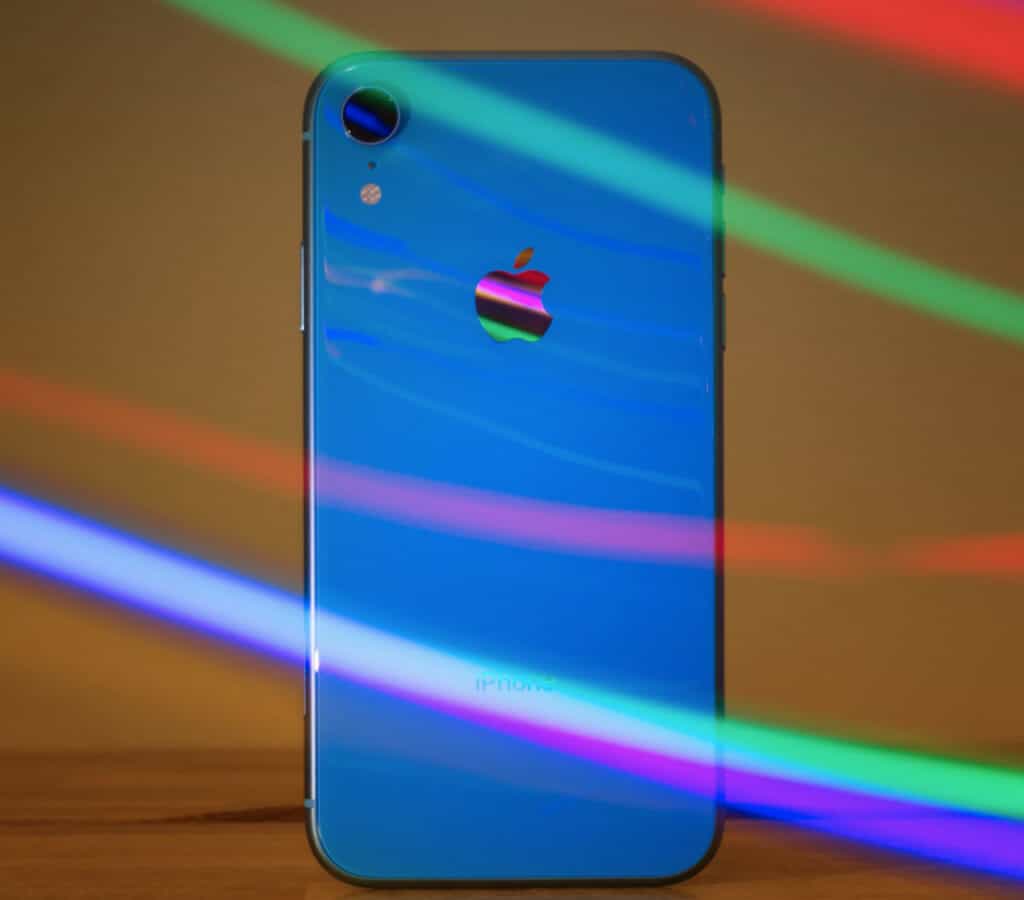
Other than these three things, that’s about it for the CONS. Me personally, I’m a big fan of the iPhone XR, especially since it is now so cheap – less than $250 in some cases.
The iPhone XR looks great, is still a solid performer, and has excellent battery life, and will receive iOS updates for years to come. If you don’t mind not running the latest specs and hardware, things like triple-lens cameras and 5G, then, yes, the iPhone XR is totally worth a buy in 2021.

iPhone XR
4.5
The iPhone XR is now one of the cheapest routes into Apple’s ecosystem. It doesn’t have 5G and it runs Apple’s older LCD screen. But the phone itself looks as modern as ever and now costs next to nothing. If you’re looking for a cheap way to buy an iPhone, this is it…
Pros:
-
Outstanding Battery Life
-
Modern Design w/ FACE ID
-
Will Get iOS Updates For Years
-
Loads of Color Options
-
Still A Solid Performer
BEST DEAL RIGHT NOW
Full iPhone XR Review: Our Original Take From 2018
While Apple perhaps wants people to focus on the more expensive iPhone XS and XS Max, the staggered launch of the iPhone XR – billed as the ‘budget’ option by many – suggests that this third model could offer something special.
Just like the iPhone 5C all those years ago, and the newer iPhone SE 2020, this cut-price offering sits alongside 2018’s flagship iPhones as a more accessible alternative, despite the fact that it uses the exact same A12 Bionic processor and comes with Face ID as standard.
Basically, this phone – like the iPhone SE 2020 and the newly launched Apple Watch SE – is all about value for money.
MORE: iPhone 11 Reviews: Was It Worth The Wait?
There are some other things to consider, however; the XR lacks the OLED screen seen on the iPhone XS, XS Max, and the iPhone X, there’s no 3D Touch and the resolution is lower, too. You also lose the second telephoto camera on the back of the phone, so optical zoom isn’t an option.
The iPhone XR screen size is also very different to Apple’s older iPhones – the iPhone 8 Plus and iPhone X – and is rather large; the iPhone XR screen is a 6.1in LCD panel. But thanks to the removal of the home button, the phone itself does not “feel” like a big phone.
The overall footprint of the iPhone XR, while having a bigger display than the iPhone 8 Plus, is actually smaller than the iPhone 8 Plus overall, as you can see below:
- iPhone XR Screen Size & Dimensions: 6.1in LCD Display; 150.9 x 75.7 x 8.3 mm
- iPhone 8 Plus Screen Size & Dimensions: 5.5in LCD Display; 158.4 x 78.1 x 7.5 mm
The iPhone XR does not have an OLED display, and it runs the same single-lens cameras the iPhone 8 and the newer iPhone SE 2020. But it does feature the same design language as Apple’s X series phones, so the iPhone X, iPhone XS, and iPhone XS Max.
Are these concessions really worth the saving of around £250, or should you opt for the full-fat XS version?
Read on to find out.
iPhone XR Review: Design
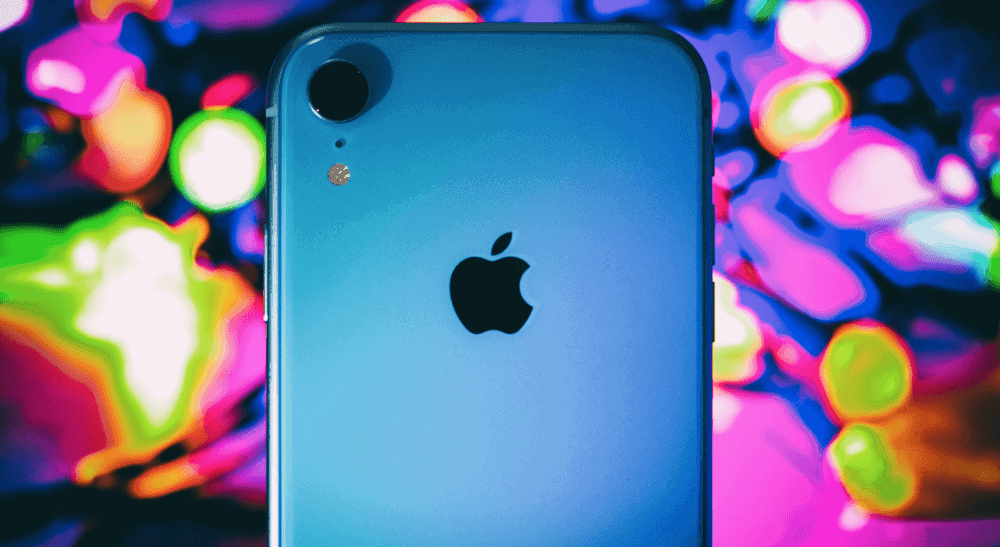
Available in a range of nice, eye-catching colours, the iPhone XR is designed to look a little more vibrant and appealing than the stately XS. It has the same basic design – a metal frame with rounded edges, backed by the easily-breakable glass (ProTip: get yourself a case, pronto) – but there are some subtle differences to note. Perhaps the most obvious is the lack of a dual-camera array on the back; instead, there’s a single lens which protrudes rather alarmingly, which means it’s impossible to lay the phone down on a flat surface without it wobbling. This is, perhaps, the only genuine grumble you can have about the XR from a pure design perspective.
MORE: Why Everybody Should Consider Buying A Refurbished iPhone…
The bottom of the phone is home to the Lightning port (making perhaps its final appearance – Apple has shifted to USB Type-C on its new iPad models), one of the speakers (the other is at the top, in the earpiece) and the in-call mic. On the right-hand side, there’s the Nano SIM tray (the XR, unlike its Android rivals, doesn’t allow for two SIMs to be inserted at once) and power button; the left-hand side features the two volume keys and the traditional ‘mute’ switch. It’s an incredibly clean phone overall, something which is of course helped by the fact that Apple has once again decided that a fingerprint scanner isn’t required when you have Face ID. We’re not entirely sure that’s the case, but more on that later.
It’s worth noting that the XR is slightly larger than the standard XS and slightly smaller than the XS Max – it’s a neat middle ground between the two. Apple’s phones have traditionally been a little daintier than their Android rivals, and the wisdom of making the XR larger than the standard model seems off; however, in reality, the XR is on par with pretty much any typical Android device these days. It has the same footprint as the BlackBerry Key2 LE – which we felt that was quite a compact device – and is much smaller than the Honor 8X. Even though the XR might sound bigger than you’d like on paper, it’s actually perfectly pocket-sized if you’re used to Android phones. The problem is when you’re upgrading from the iPhone SE or iPhone 7 – it might take some getting used to.
The XR is water and dustproof, with a rating of IP67 – that’s lower than the XS and XS, which have a rating of IP68. The difference? Well, the XR can withstand half an hour of immersion in depths of up to a metre, while the XS and XS Max can handle half an hour in depths greater than a metre.
iPhone XR Review: Display
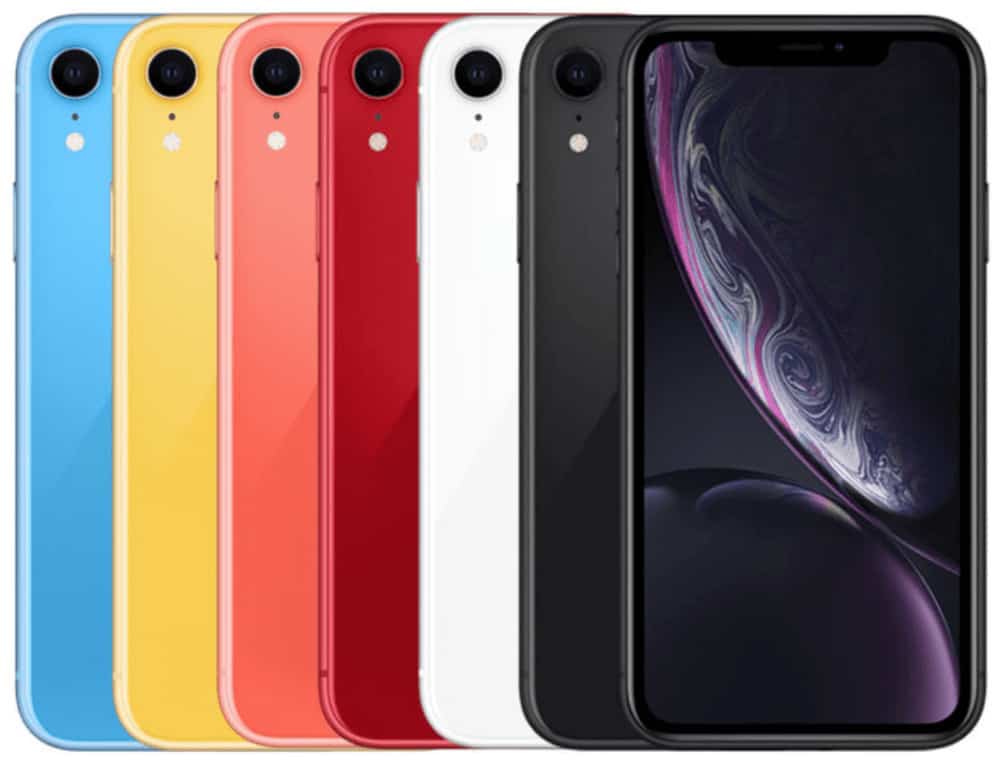
Outside of the camera, the single biggest difference between the XR and its stablemates is the screen. It uses a 6.1-inch Liquid Retina LCD display which Apple is calling the most advanced of its type – and we’re inclined to believe them. While it can’t quite match an OLED panel for colour vibrancy and deep, dark blacks, it’s easily the best LCD screen we’ve ever laid eyes on. It’s bright, colourful and has great contrast; the only fly in the ointment is that there seems to be some slight ‘ghosting’ when scrolling through certain apps (white backgrounds with black text are when this is most noticeable).
MORE: The #1 Top-Rated iPhone XR Cases For 2019 & Beyond
With a resolution of just 1792×828 pixels, the screen offers a pixel density of 326 pixels per inch. Compare that to any modern flagship phone and it sounds awful, but we’ve long argued that cramming all of those pixels into a mobile display is ultimately pointless; after a while, it becomes impossible to see the benefit and all it does is add more pressure on the phone’s processor. While it’s possible to pick out individual pixels on the XR’s screen if you really squint, it’s still perfectly serviceable. We’d even argue that the average person wouldn’t be able to tell that this display is pushing fewer pixels than the one on the XS – our anecdotal tests seem to back up this viewpoint.
The notch is still there, of course; it has become a fashion statement rather than a functional feature now, and we’d imagine that will prolong its lifespan for many years to come yet. It’s a shame that Apple couldn’t reduce the size of the notch in same way OnePlus has done on the 6T, but it houses some pretty complex tech, so we can’t complain too much.
The only other thing to note is that the bezel around the screen is slightly bigger than the one seen on the XS and XS Max, presumably because LCD tech has been used. It’s not a deal-breaker, but it’s worth noting. There’s also no 3D Touch, but even the most hardcore Apple fan will admit that the omission of this feature isn’t worth crying over.
iPhone XR Review: Software & Performance
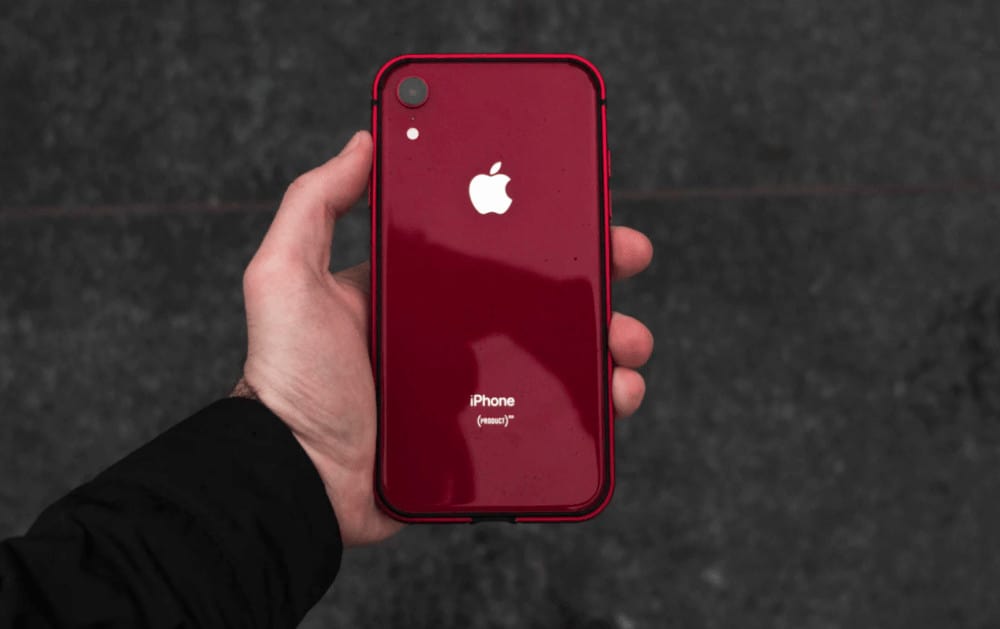
Because it’s launching a few weeks after the arrival of the XS and XS Max, the XR benefits from the first bug-fixing update to iOS 12, 12.1. After the mess that was iOS 11 last year, iOS 12 feels totally different; it’s smoother, faster and more intuitive. Features like Screen Time offer tangible advantages, in this case helping you to take control of how many hours you spend staring at your handset’s display. It might sound like an odd feature to include – something that makes you use your phone less – but it’s refreshing to see hardware makers recognise that sometimes, we take things a little too far when it comes to smartphones.
As previously noted, there’s no fingerprint scanner on the iPhone XR, so you’re totally reliant on Face ID – again. While this system is massively improved over the one that launched with the iPhone X, it’s still far from perfect. There were multiple times during our review period when it failed to work properly, and even more times when it did work, eventually, but nowhere near as rapidly as a finger on a scanner.
FaceID is an amazing piece of tech – there’s no doubt about that – but it should never, ever have been positioned as a replacement for the fingerprint scanner, and we’re not sure it will ever rival that option when it comes to speed and accuracy. We remain eternally hopeful that next year, Apple will adopt an in-screen fingerprint scanner and give us both options, but it feels like the company is throwing its weight behind Face ID in the hope that we’ll all eventually forget that it’s not as elegant and precise as Touch ID was (even the 2018 iPad Pro uses it).
Because it’s rocking the same A12 Bionic chipset that’s seen in the XS and XS Max, the iPhone XR is one of the most powerful phones on the planet right now. Apple’s tech is way ahead of what Qualcomm comes up with traditionally because Apple knows its chips will only go into a handful of devices – devices which it designs from the ground up. Therefore, it can extract every bit of power from the chip in a reliable manner, whereas Qualcomm’s Snapdragon range has to cope with the Android sector’s dizzying number of different hardware variants.
Because the XR is pushing fewer pixels than the XS and XS Max, this power is even more obvious; fewer pixels to push means the processor can go that extra yard, and performance is never anything less than exceptional. Every single activity or function on the XR feels buttery-smooth and moving between apps is instantaneous. Apple fans often boast that in terms of the UI experience, the iPhone is king – and it’s hard to argue after spending a few days with the XR; it’s an absolute pleasure to use. While it has 3GB of memory compared to the 4GB found in the XS and XS Max, we can’t say we noticed any dips in performance.
In terms of benchmark scores, the XR scored 362243 in Antutu’s test. In Geekbench 4, it clocked up a single-core score of 4792 and a multi-core score of 11156.
iPhone XR Review: Battery & Memory
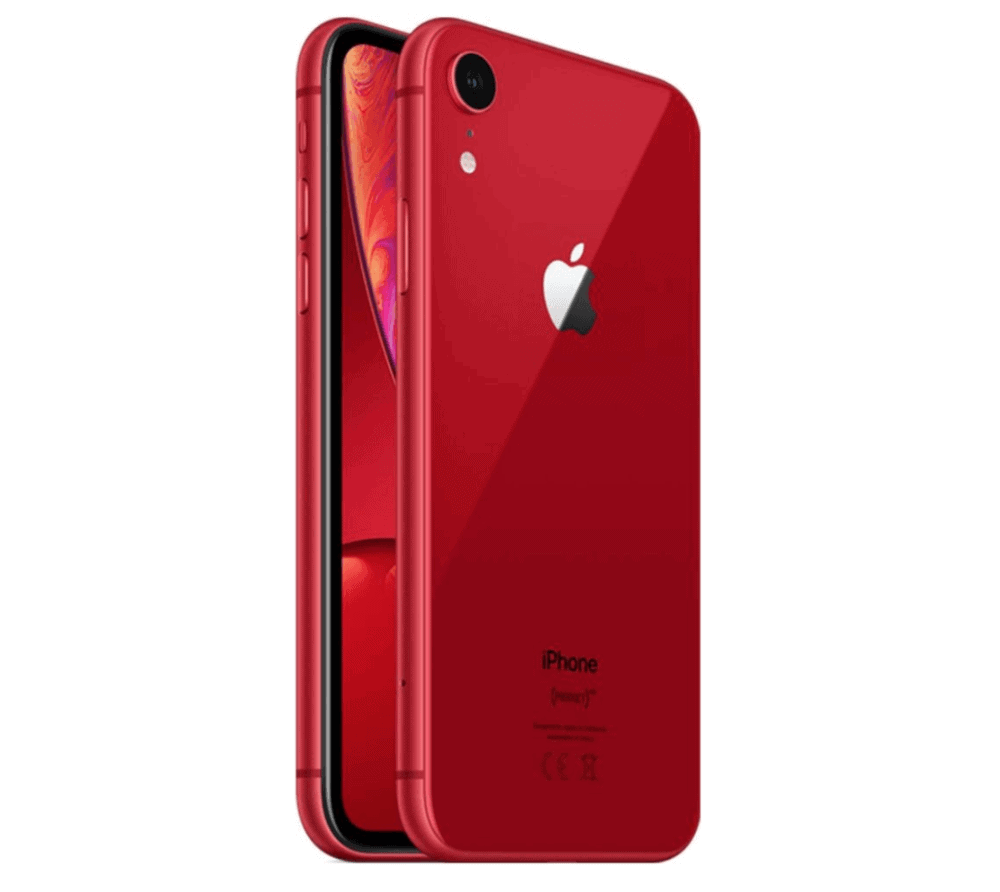
While it lacks an OLED screen so all of those black pixels are lit rather than turned off, the iPhone XR comprehensively beats the XS and XS Max when it comes to stamina – and we think that lower-resolution display is the reason.
In normal day-to-day use – where we used the phone as our main handset and browsed the web, replied to emails, listened to music, took photos and video and played some 3D games – the XR was still full of juice by the time the sun went down. In fact, we were able to forgo charging the phone in the evening and still had some power left the next day – something that rarely happens with modern smartphones, and certainly hasn’t happened before with any iPhone we’ve owned.
Of course, the caveat here is that your personal usage will impact the XR’s battery life. If you decide to set the screen to maximum brightness and watch two or three films in a single day, then the battery is obviously going to take a battering. Recording 4K video also sucks power at an alarming rate, but this is the same across all phones.
The phone supports both fast charging and wireless charging – we tested the latter on our Samsung Galaxy charging dock – but sadly the bundled wall charger doesn’t quick-charge the phone. You’ll need to buy another (expensive) charger from Apple to do this, which is quite a cheek when you consider that pretty much every other smartphone maker on the planet includes a fast charger in the box.
In terms of storage, the XR is available in three flavours: 64GB, 128GB and 256GB. 64GB is pretty much the entry-level for a 2018 smartphone these days and will be enough for a typical user, but the fact that you can’t add in more memory means you need to pick the right capacity on day one.
iPhone XR Review: Camera
The headline news here is that the XR drops the secondary telephoto camera and opts for a single 12-megapixel wide-angle snapper. This means the fancy ‘Portrait’ shots are done entirely with software, and you can’t zoom in quickly on objects, either.
Outside of that, it’s hard to be disappointed with the quality of the photos and video produced by the XR. The camera is basically the same as the main sensor on the XS and XS Max, so you can expect the same kind of quality – in short, photos look sharp, colourful and showcase good levels of contrast and dynamic range. Apple’s new HDR system works brilliantly too, taking multiple shots to really bring out the detail in each scene. Portrait shots are also great, despite the lack of a second sensor to judge depth.
It’s worth noting also how quick the XR’s camera is to focus and shoot; this has been a hallmark of Apple’s hardware for years, and it’s pleasing to see this maintained even on ‘cheaper’ hardware. While Android phones like the Galaxy S9 and Pixel 3 are catching up – and even surpassing – Apple in this regard, the vast majority of Android handsets come a poor second to Apple’s devices when it comes to focus-and-shoot speed.
The lack of a proper optical zoom is a shame, and we did miss it when we were messing about the XR’s camera. Digital zoom isn’t as bad as you might assume on this model, but it’s not as easy to use. Meanwhile, the selfie cam is fine, and video recording is very good indeed.
iPhone XR Review: Conclusion
Listing the things that the iPhone XR lacks when compared to the XS and XS Max makes it seem like you’re losing a lot just to shave £250 off the asking price: no OLED screen, no telephoto camera, weaker water and dust protection, no 3D Touch, 1GB less of RAM.
However, these things mean little when it comes to the day-to-day performance of the phone, which is utterly superb. By selecting a lower-resolution display Apple has given the XR a real boost in terms of performance, and the great thing is, most people won’t even notice that there are fewer pixels moving around. An OLED panel would have been nice, but Apple’s fancy new Liquid Retina technology is seriously striking, so it’s not a massive loss.
There are annoyances here and there – no fast charger in the box, Face ID isn’t as good as Touch ID, and then there’s the yearly merry-go-round of finding which dongle you need for simple things like plugging in a pair of wired headphones – a standard situation for Apple fans these days.
Ultimately, though, this is perhaps the best iPhone option of 2018. While it’s not cheap when compared to what the Android market has to offer, if you’re a diehard Apple fan then the notion of switching sides means this will seem reasonably priced when compared to the company’s other iPhones this year – yet it never feels like you’re missing out by choosing the XR.
If you absolutely have to own the very best iPhone then the XS remains the better choice, but for everyone else, this is the one to go for.

Damien McFerran
Damien McFerran has been covering phones and mobile technology for well over a decade. An Android specialist, as well as an expert reviewer of phones, Damien is one of the best technology journalists working today. He is also editorial director over at the excellent Nintendo Life.











